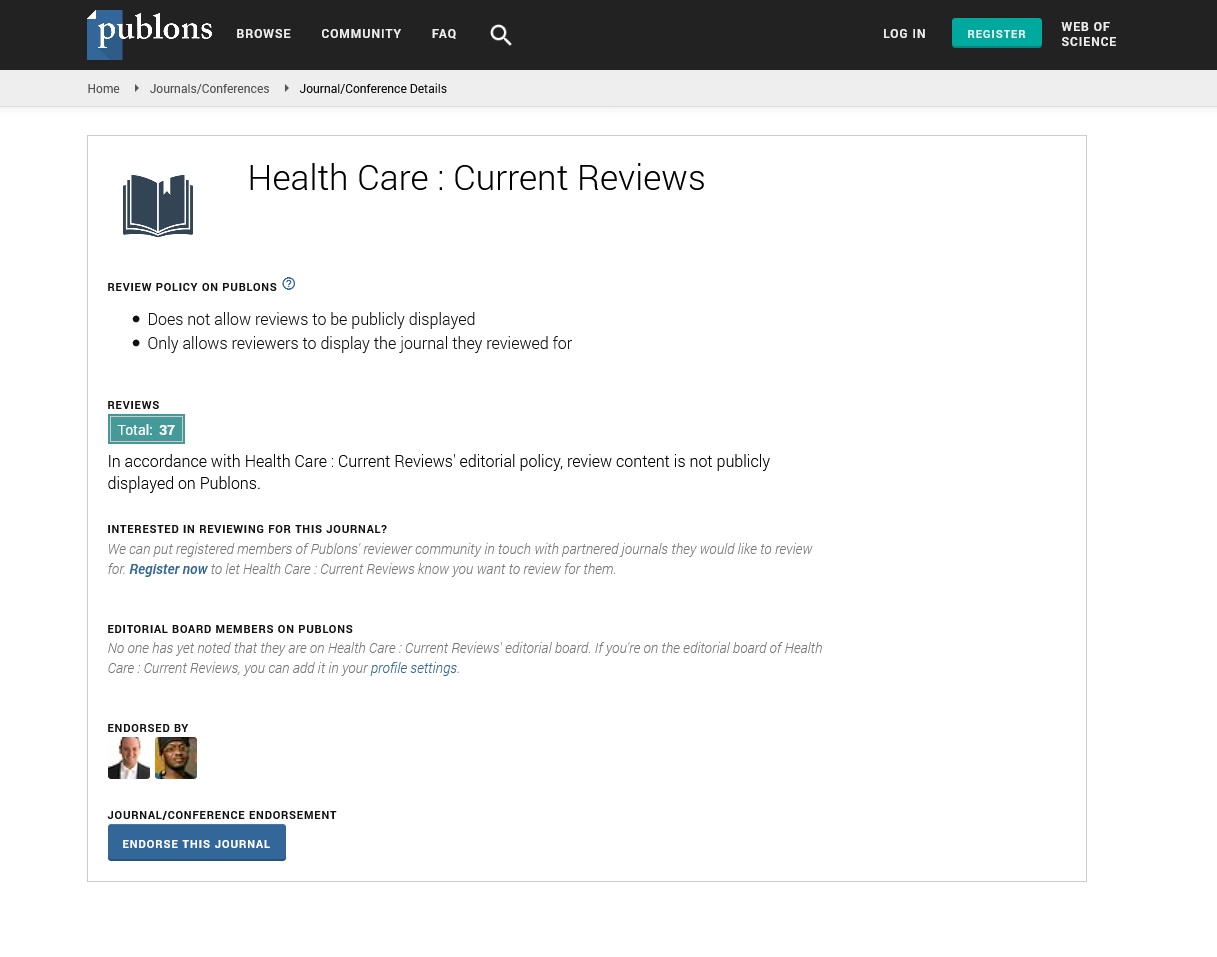Indexed In
- Open J Gate
- Academic Keys
- RefSeek
- Hamdard University
- EBSCO A-Z
- Publons
- Geneva Foundation for Medical Education and Research
- Google Scholar
Useful Links
Share This Page
Journal Flyer

Open Access Journals
- Agri and Aquaculture
- Biochemistry
- Bioinformatics & Systems Biology
- Business & Management
- Chemistry
- Clinical Sciences
- Engineering
- Food & Nutrition
- General Science
- Genetics & Molecular Biology
- Immunology & Microbiology
- Medical Sciences
- Neuroscience & Psychology
- Nursing & Health Care
- Pharmaceutical Sciences
Perspective - (2025) Volume 13, Issue 1
Healthcare Innovation in the 21st Century: Balancing Progress with Equity
Hiroshe Nakamura*Received: 26-Feb-2025 Editor assigned: 28-Feb-2025 Reviewed: 14-Mar-2025 Revised: 21-Mar-2025 Published: 28-Mar-2025, DOI: 10.35248/2375-4273.25.13.424
Description
The 21st century has brought rapid changes in healthcare, driven by science, technology and digital tools. From advanced diagnostics to new treatment methods, the field has expanded in ways that were once considered impossible. However, with progress comes the responsibility to make sure these advances reach everyone. While some people enjoy the benefits of modern care, others still face challenges in accessing even the most basic services. Balancing innovation with fairness is one of the key challenges facing healthcare systems today.
One of the most visible changes in healthcare has been the rise of digital solutions. Remote consultations, health-monitoring apps and online records have become more common. These tools offer convenience and save time for both patients and medical staff. People can now speak with a doctor from their home, track their condition through mobile devices and get reminders for medication or appointments. This shift is especially helpful in busy cities or for those with mobility issues.
However, not everyone can access these tools. In many rural areas or low-income communities, internet connections may be poor and devices such as smartphones or computers may not be widely available. In these situations, people can be left out of systems that are meant to make care easier. When healthcare becomes more dependent on digital platforms, the risk is that those without access fall further behind.
Another area of progress is the development of new drugs and therapies. Medical research is moving faster due to better data, improved lab methods and global collaboration. Diseases that once had few treatment options are now being addressed with more targeted and effective approaches. Clinical trials are more advanced and medications can be tested and approved more quickly.
Yet, these new treatments often come with high costs. Some are not covered by insurance or are only available in certain regions. As a result, the benefits may be limited to people with higher incomes or those living in countries with well-funded health systems. Others may be forced to rely on older, less effective treatments simply because newer ones are out of reach. This situation highlights the need for better pricing models, global cooperation and public investment in healthcare access.
The use of artificial intelligence and machine learning is another major change. These tools can help analyze test results, detect illness earlier and even suggest treatment options. In hospitals and clinics, they help staff work more efficiently by taking over some repetitive tasks. In theory, these systems can help reduce human error and improve care.
But if not carefully managed, such technology can also increase differences in care. AI models are often trained using data from specific populations, which may not reflect the needs of all groups. If the data is limited or biased, the recommendations may be less accurate for certain patients. Developers and healthcare providers must work together to make sure the tools are fair and that they help, rather than harm, those who already face barriers to care.
Equity also depends on who is included in the decision-making process. Healthcare systems that involve patients, families and communities in planning and evaluation tend to do better at meeting real-world needs. Listening to the concerns of different groups—especially those who have been underserved—can help improve outcomes and trust. This also helps reduce fear and resistance, which are often fueled by a lack of understanding or previous negative experiences with care systems.
Education and training are also changing in response to innovation. Medical professionals are now expected to understand both clinical and technical aspects of care. Courses now include instruction on how to use new devices, manage digital records and interact with patients remotely. At the same time, it is important that providers remain sensitive to social and economic factors that affect health. A strong connection with patients—built on empathy and respect—cannot be replaced by technology.
To keep moving forward, healthcare systems need to invest not only in new tools but also in access, communication and fairness. Innovation should be guided by the goal of improving care for all, not just for those who already have advantages. By focusing on both progress and fairness, healthcare can continue to evolve in a way that serves everyone—regardless of background, location, or income. The challenge is large, but so is the opportunity to build systems that are both advanced and inclusive.
Citation: Nakamura H (2025). Healthcare Innovation in the 21st Century: Balancing Progress with Equity. Health Care Curr Rev. 13:424.
Copyright: © 2025 Nakamura H. This is an open access article distributed under the terms of the Creative Commons Attribution License, which permits unrestricted use, distribution and reproduction in any medium, provided the original author and source are credited.

